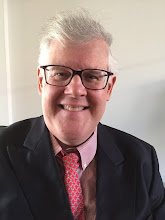Syria shadowed UN General Assembly
Presidents, prime ministers, kings and potentates came to New York for the 68th annual UN General Assembly. The ongoing Syrian crisis and the toxic haze of recent chemical weapons use, clouded the diplomatic horizon at the global gathering as delegates confront issues of war, peace and widening humanitarian disasters.
But it’s the General Debate, the key policy speeches over the next two weeks where the headlines are generated, that’s the highlight of the session. While delegates speak with broad brush themes concerning development, disarmament, poverty and peacekeeping, be certain the focus will remain on Syria’s ongoing civil conflict and the regional shock waves reverberating throughout the Middle East from Turkey to Lebanon and Jordan.
By tradition Brazil spoke first followed by the United States. Normally this is a gracious formality between two friendly nations but this year Brazil’s leftist president is irate over alleged U.S. electronic eavesdropping on her government and herself personally. Dilma Rousseff took the unprecedented step to cancel a state visit to Washington, D.C. planned for October.
Brazil a close U.S. Latin American ally and rising economic power has been plainly insulted by the eavesdropping allegations and it looks like political damage control won’t work this late in the process.
Key speakers included Barack Obama, Argentina’s President Christina Fernandez-Kirchner, Islamic Iran’s Hassan Rouhani, and France’s Francois Hollande.
King Abdullah of Jordan, probably the most erudite and sagacious speaker, as well as the Monarchs of Monaco and Qatar also addressed the delegates.
More controversial leaders, included Zimbabwe’s longtime dictator Robert Mugabe.
More controversial leaders, included Zimbabwe’s longtime dictator Robert Mugabe.
Contrary to past years, delegations from 193 UN member states will not meet under the dome in the majestic General Assembly hall with its soaring ceilings, marble rostrums and aura of history but rather in what looks like an IKEA-type building with low ceilings, functional furniture, and a faux marble rostrum more akin to a model UN than to the real deal. Given that the Assembly hall is under renovation, as was the 38-story UN Secretariat building for the past five years, the whole presence looks a bit low budget.
One hundred thirty-one heads of state and government will attend the session as shall sixty foreign ministers. Yet many of the heavy-hitter countries such as the United Kingdom, Canada, China, Germany, Russia, and South Korea were represented by their respective foreign ministers.
There’s the plethora of 174 assembly agenda items to wade through; from hot button political issues, to vital peacekeeping operations, and budgetary items to a gaggle of the usual perfunctory anti-Israel resolutions, and slap on the wrist items ranging from the question of the Falkland Islands to the continuing American economic embargo on Cuba. Many of the agenda items center on the mantra of sustainable development.
After the controversial one year tenure of Serbia’s Vuk Jeremic, this year’s new Assembly President Dr. John Ashe hails from Antigua and Barbuda in the Caribbean.








